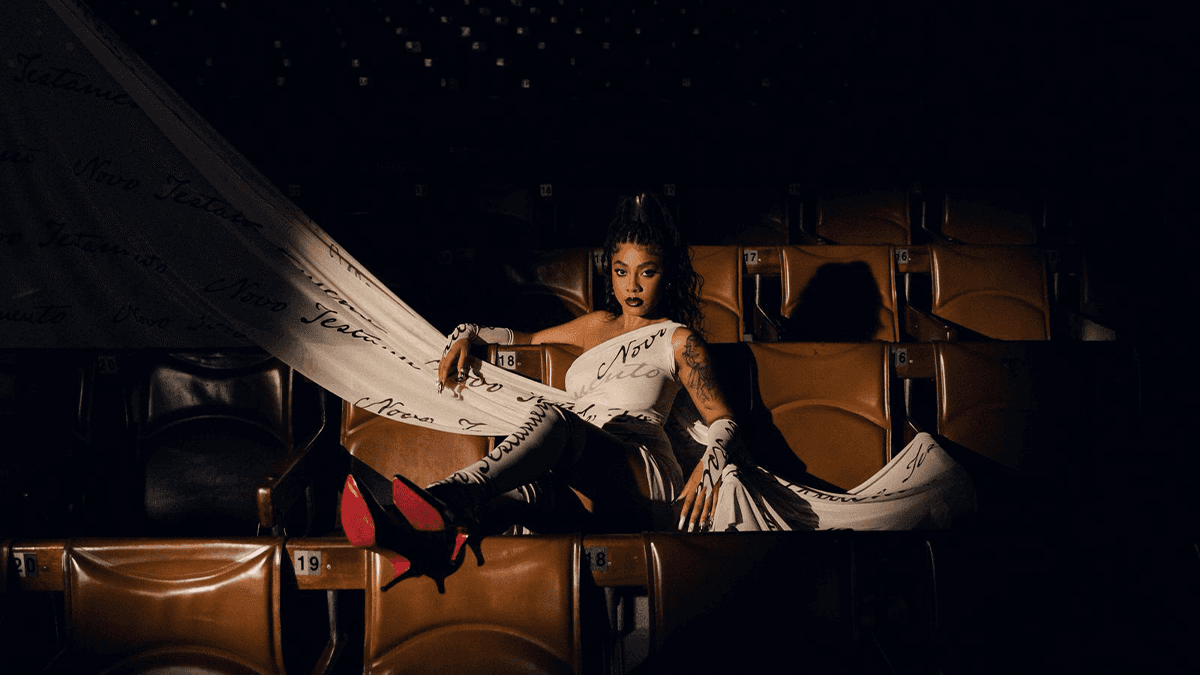The scene records in 'Prelude': the first book by Alisson Gabriel
Between shows, travels, and encounters with some of the most influential names in contemporary music, Alisson has built a collection that now takes shape in his first book and exhibition. “Prelude” is the result of an intimate and sincere look at what happens away from the spotlight — in the backstage, in silences, in the subtext.

Born in the East Zone of São Paulo, Alisson transforms his experiences into a visual manifesto. The exhibition, curated by Samuel da Paz, highlights the importance of documenting a scene that is shaping Brazilian culture with affectionate and resistant discourse.

We spoke with Alisson about the process, the choice of images, and what it means to eternalize this narrative. Check it out below:
How did your interest in photography arise? Was there a specific moment in your childhood that marked this creative awakening?
Photography appeared to me as a place of silence and observation. When I was a child, I always saw myself quietly in corners, noticing things, gestures, details. I didn’t yet understand that it was a way of looking at the world, but it was already a form of registering with my eyes. The click of the camera came later, but the gaze was there from an early age.

Your journey is marked by authentic records. In what way do your personal experiences and origins influence your artistic gaze today?
Everything I photograph carries, in some way, my experiences. Coming from the East Zone of São Paulo, I grew up surrounded by multiple and intense realities, filled with people with many stories to tell, even without speaking. This taught me to look with attention and respect. I think my photography starts from this place: recognizing the beauty and power in spaces that are not always illuminated.

Before establishing yourself as a photographer, who was Alisson? How was this journey constructed up until now?
First of all, I was a curious person. Someone who walked around with a camera without really knowing what I was looking for, but felt the need to preserve certain scenes. Gradually, this instinct turned into work, and the work became a mission. I came to understand that my photography could be more than a beautiful record; it could tell something important about people and about myself as well.

How did the idea of transforming this collection into a book and exhibition come about? Was it something you had visualized for a long time, or did it arise along the way?
I have always had the habit of looking at the photos I've taken and thinking: this cannot just stay in the cloud, you know? But the idea for the book really emerged when I realized that some images told a bigger story together. It was at that point that the desire to eternalize these narratives became a project. The exhibition came as a natural extension of this, as if the photos needed to occupy a physical space, to breathe with the audience.

What makes a photograph special enough to be part of the Prelude?
The Prelude is not about the prettiest photos, but about the truest ones. The ones that affected me when I clicked. The ones that, when I look at them today, still make me remember the smell of the place, the music that played, the energy among the people. They are photos that carry presence.

We know that this project was developed amidst travels, shows, and work. How did you manage the challenges of time and focus during this process?
It was difficult. There was a lot of fatigue and doubt along the way. But at the same time, Prelude was being made in this chaos; it exists because it was born in the midst of the hustle. I had to learn to create between one trip and another, to edit on the road, to believe even when time was tight. And I had a network of people who helped me a lot to maintain focus and carry on.

Your work is deeply connected to the contemporary urban music scene. How do you see the importance of documenting this movement at the present moment?
This movement carries not only sounds but also discourses, experiences, revolts, and affections. It is a scene that is shaping the culture of the country and the world. Documenting this is recording living history. It ensures that, in the future, these images will speak about what it was like to be young, an artist, black, peripheral, or simply a dreamer in this time.

You have a unique ability to capture the backstage and turn them into protagonists. Why is this perspective so important to you?
Because that's where the truth lies. In the dressing room, in the hallway, in the van, before and after the stage. The backstage is where the masks come off and humanity appears. I like to show that the spectacle is not just what we see in the center of the light; it also happens in the shadows.

What impact do you hope to have by sharing these visual narratives with the public?
I want people to recognize themselves. To see something of themselves or something they had never noticed. To feel. If an image from Prelude makes someone stop for a few seconds and think "I know this feeling," then it was worth it. It’s about touching in some way.

If you could give one tip to someone, what would you say?
Don’t wait for anyone’s permission to start. And don’t underestimate your perspective. Sometimes what you see and feel is exactly what needs to be said.
See others like this





